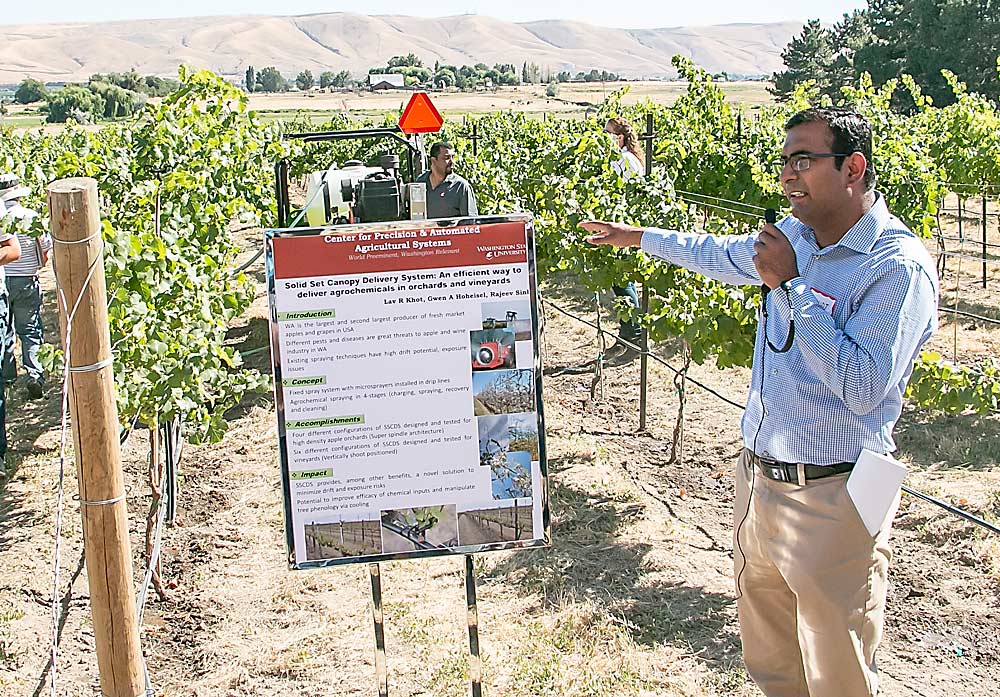
Lav Khot, a biological systems professor at Washington State University, leads a tour at the university’s Center for Precision and Automated Agriculture Systems in Prosser, Washington, in 2017. Khot and a team of collaborators have received a $300,000 New Innovator grant from the Foundation for Food and Agriculture Research to explore ways to reduce pesticide residues. (Ross Courtney/Good Fruit Grower)
Fighting pests by spraying ozonated water and steaming them with hot, highly refined oil vapors: Those are two ideas researcher Lav Khot of Washington State University wants to put to the test through a $300,000 three-year New Innovator grant from the Foundation for Food and Agriculture Research that aims to reduce pesticide residues on crops.
Khot, an assistant professor in the department of biological systems, and his collaborators make up the first team from WSU to receive the matching grant from the foundation, usually called FFAR, created in the 2014 U.S. Farm Bill to fund research projects with funds from participating organizations. WSU will match the funding, bringing Khot’s total budget to $600,000, he said.
Khot and his team did not invent the ideas for his projects; they just aim to run them through some scientific scrutiny.
For the ozonated water sprayer, they plan to engineer efficient ways to generate ozonated water and test its efficacy in pest management. A few equipment suppliers commercially sell machines that spray ozonated water, making claims about their efficacy for pest control. However, it’s unknown whether the machines deliver the required concentration to the target insect.
Khot wants to know which concentrations and droplet sizes work best on specific insects.
“We want to put some data behind this,” he said.
The upside of ozonated water is that it evaporates within a few minutes, leaving no residue, Khot said. Those vapors would, in theory, disorient the insects, throwing off their mating and feeding patterns.
Researchers elsewhere, including Khot’s Michigan State University collaborator, entomologist Matthew Grieshop, have tried this in the laboratory. Khot’s team will take the research outside to a field.
Also, Khot plans to examine the efficacy of highly refined oils, either from petroleum or plant extracts, also known as horticultural oils.
Again, the technique has been around in organic production in the United States. Scientists have had some success in using it to reduce greening disease in the citrus industry, and numerous products are available for backyard gardeners.
Khot’s team plans to use some of the highly refined horticultural oils and add heat, the idea being that insects can’t handle the hot oil vapors. They have a two-year head start on the process — called horticultural oil thermotherapy, or HOT — using thyme oil and have documented some efficacy for pear psylla, a dreaded pest that has been building resistance to conventional insecticides.
Khot’s collaborators include fellow WSU researchers Betsy Beers, Michelle Moyer and Gwen Hoheisel, as well as Grieshop at MSU and Heping Zhu at the USDA Agricultural Research Service. •
—by Ross Courtney






Leave A Comment